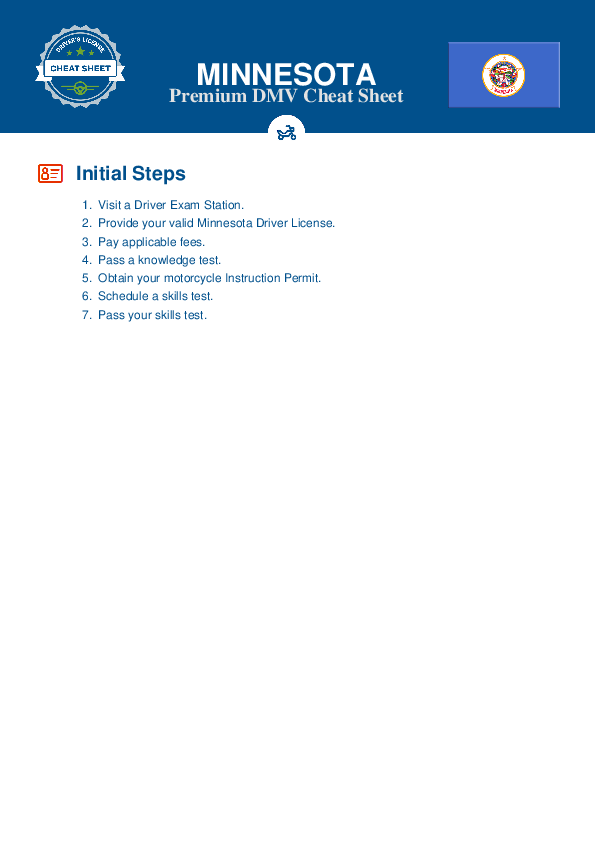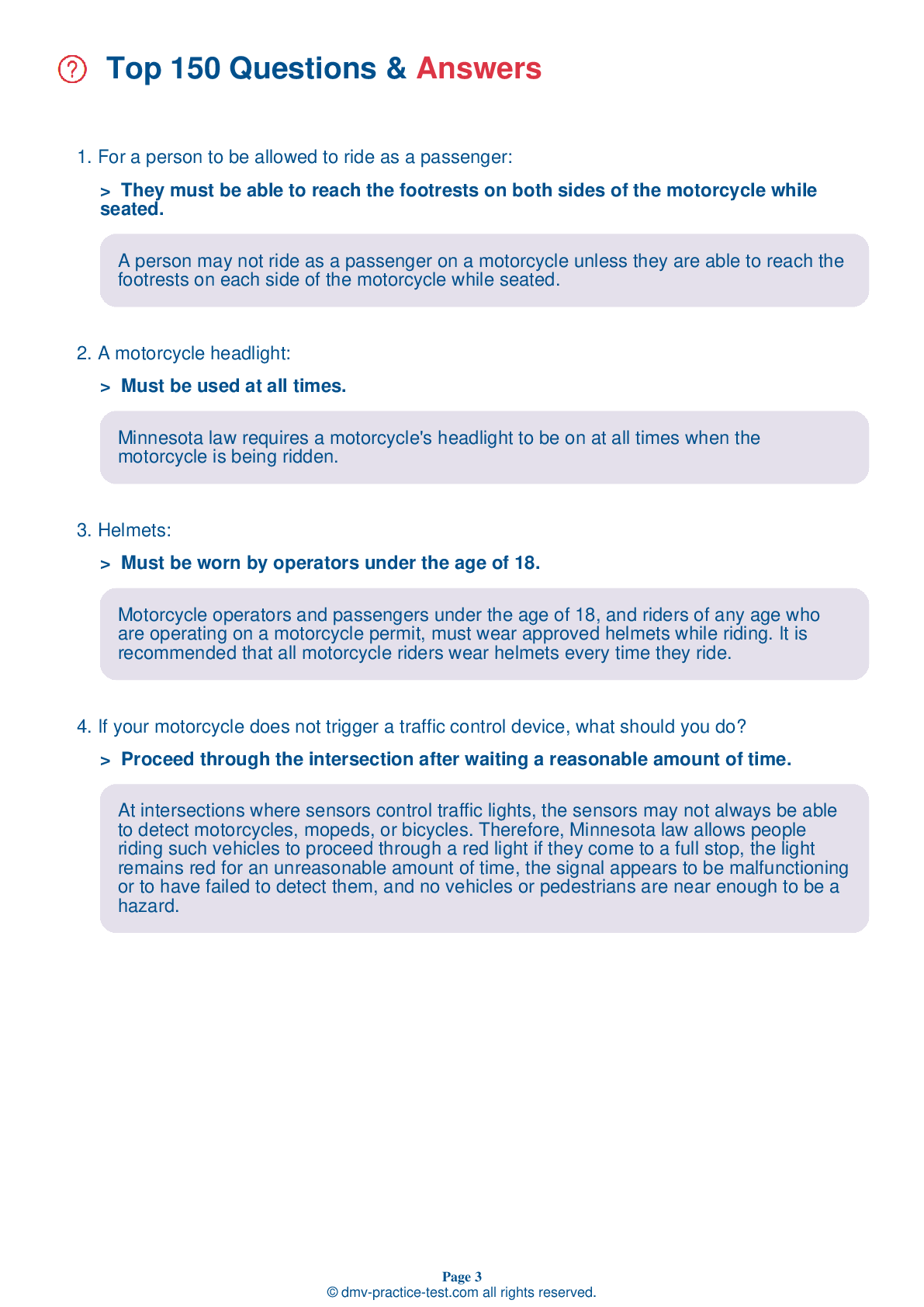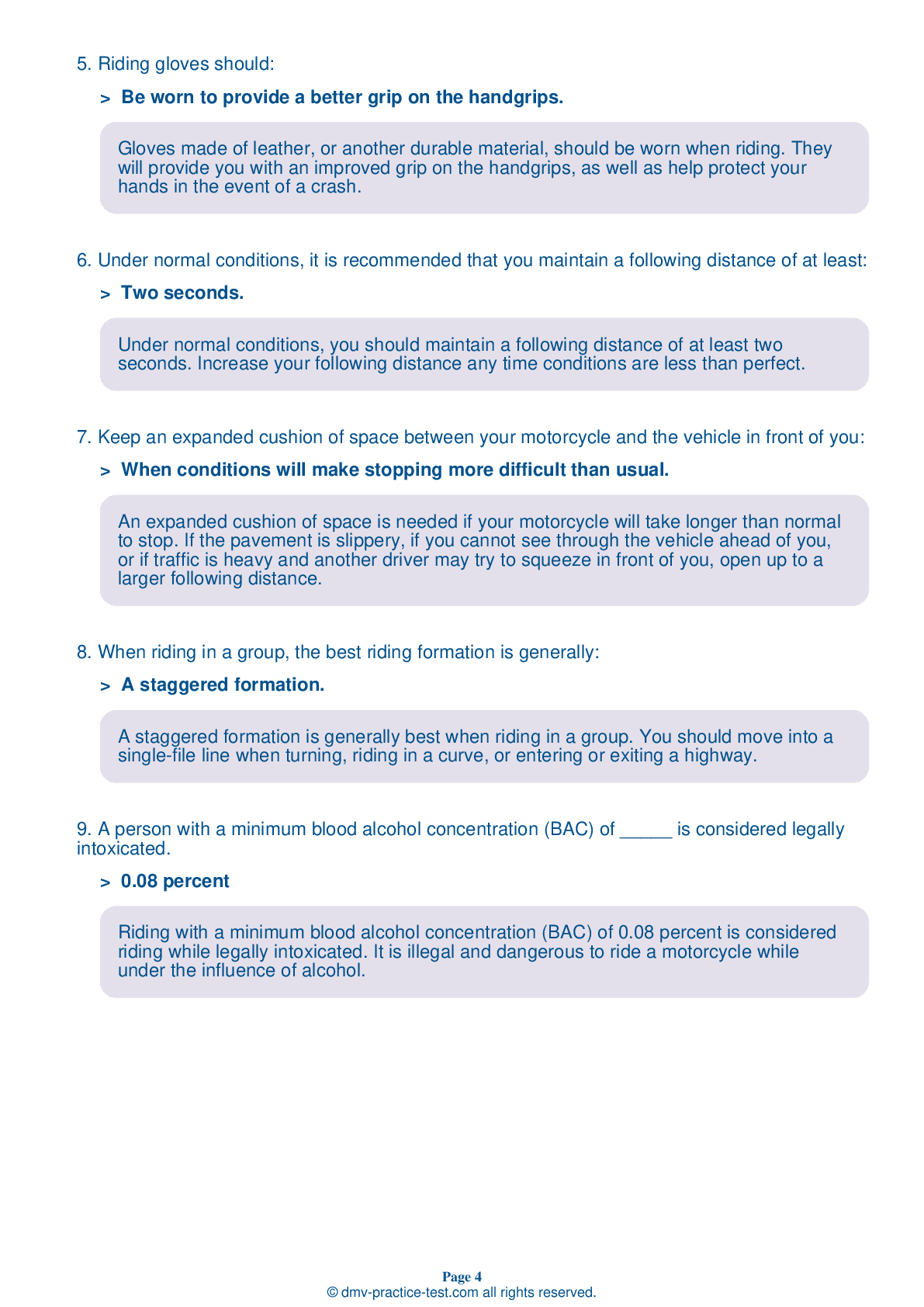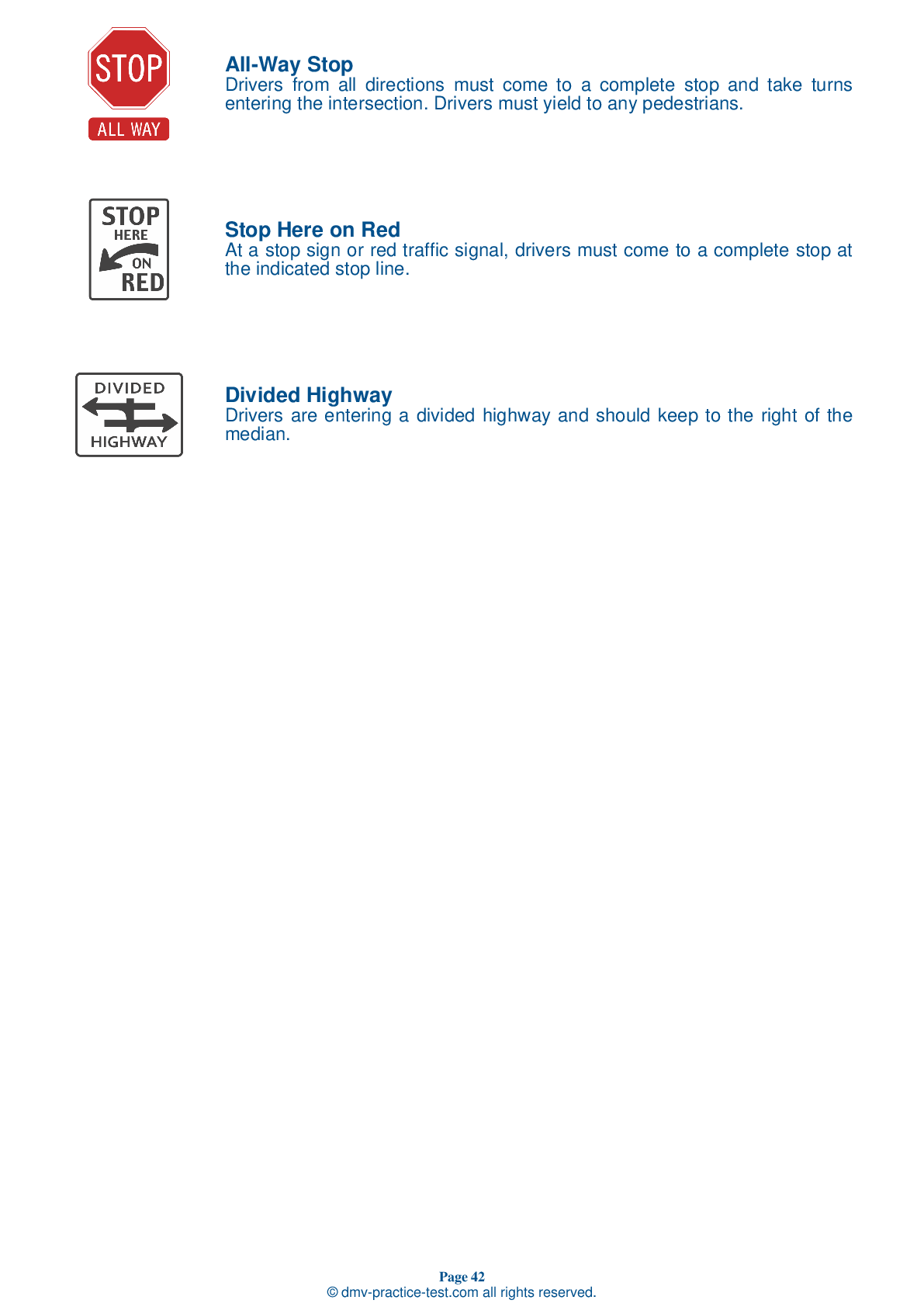Motorcycle Test | License MN 2025 | FREE Online Practice! #16 Page 5 of 5
Take this FREE motorcycle test (license in MN 2025) to check your knowledge of the road rules. To improve your results, download a motorcycle handbook online, study theory, and practice for free on our website. Still worried about how to get a motorcycle license in Minnesota in 2025? Check our website for more sample tests, train as much as possible, and boost your grades!
33 . Before every ride, you should:
Before every ride, be sure your mirrors are clean and properly adjusted. When properly adjusted, a mirror may show the edge of your arm or shoulder, but it’s the road behind you and to the side of you that is most important.
34 . Before riding, a motorcycle operator should check the clutch. A properly working clutch should feel:
Check your clutch and throttle before riding your motorcycle. The throttle should snap back when you let go and the clutch should feel tight and smooth.
35 . If your motorcycle begins to weave while you are riding over rain grooves or bridge gratings, you should:
The weaving motion that occurs when a motorcycle rides over rain grooves or bridge gratings is generally not dangerous. If you experience weaving when riding over one of these surfaces, simply relax and proceed straight across the grooves or gratings at a steady speed. Trying to compensate for the weaving motion by zigzagging is more dangerous than riding straight.
36 . Most crashes occur during the day. To lessen the chance of being involved in a crash, you should:
To minimize your chances of being in a crash, you should make yourself as visible as possible by wearing brightly-colored clothing when riding, even during the day.
37 . An approved helmet:
Any approved helmet will allow a rider to see as far to the sides as is necessary for safe riding. Approved helmets will have labels and markings providing the manufacturer's name, relevant information and instructions, and information about the standards the helmet meets.
38 . If the chain or belt of your motorcycle breaks, you will:
If your drive chain or belt fails, you will experience an immediate loss of power to the rear wheel.
39 . When a lead rider's left arm is bent at the elbow with their index finger pointing straight up, it means:
Hand signals are an important part of communication when riding in groups. When the lead rider's left arm is bent at the elbow with their index finger pointing straight up, it means the group should move into a single-file formation.
40 . This sign means:
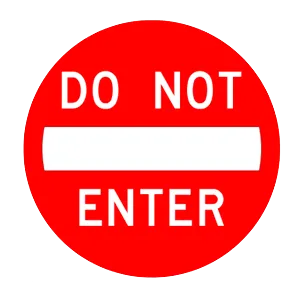
This sign means that it is not safe for drivers to enter the indicated road or driveway from their current direction. If you come across one of these signs, you should immediately turn around and drive a different way.
See the exact questions that will be on the 2025 Minnesota DMV exam.
99.2% of people who use the cheat sheet pass the FIRST TIME
Jeneen was tired of paying $5/gallon. She got herself a scooter that required the motorcycle license. She studyed the motorcycle test cheat sheet and passed her test the next day!
Christopher tells us how he knew nothing prior to obtaining the motorcycle study guide, and he only got one question wrong because he clicked on the wrong answer by mistake.
